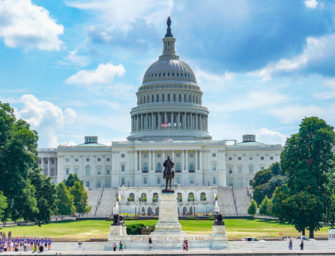In the Aftermath of Hurricane Harvey
For days before it made landfall, the projections for Hurricane Harvey’s impact on Texas―and other parts of the Gulf Coast―were of devastation. Then, when the record-breaking storm arrived, our worst fears were realized as the region was inundated with 101-130 centimeters of rain, not to mention high winds and intense storm surge. Now, as we reflect on Hurricane Harvey, we do so acknowledging that other countries are suffering through catastrophic flooding events of their own and the Caribbean and south-eastern coast of the U.S. are monitoring Hurricane Irma. We are monitoring the impact of these natural disasters, both here in the U.S. and around the world, and we are working to identify AGU members who may be in Hurricane Irma’s path.
Many AGU members have dedicated their lives to understanding how these storms function, the kinds of havoc they can wreak on infrastructure and environmental systems, and how communities can safely and effectively recover and rebuild from the aftermath. Even as the flood waters have begun to recede in Texas, the true costs of Hurricane Harvey, including its toll on human life, remain unclear. Our primary concern remains with the safety and welfare of those affected, including research institutions and facilities. As the needs in these communities become clearer, we encourage you to continue to share recommendations about how AGU can be of assistance.
Several suggestions have already been offered. It was pointed out that members from the affected areas, who had submitted abstracts to the Fall Meeting, would have difficulty securing hotel rooms, given that the room block had just opened. AGU staff came up with an alternative plan for these members, and will be reaching out directly to abstract submitters in the affected areas to ensure that they have housing for the meeting.
Many requests were made to ensure that there would be a place at the Fall Meeting where those who are already studying Hurricane Harvey’s impact could present their research. The Fall Meeting Program Committee has made arrangements for late-breaking sessions that will address the many aspects of this event and its implications: crowd-sourced data and social media in disaster response; policy implications; high resolution remote sensing; flooding and infrastructure damage; impacts on the environment and human health; changing coastal landscapes; oceanographic, atmospheric, and climatic factors contributing to the storm; data access and assimilation; and HPC and cloud computing for real-time analysis. There will likely be three to four total sessions, and at least one will be opened up in the new eLightning format (for which AGU will cover any additional fees). The committee is also considering allowing for additional invited speakers as needed.
These new Fall Meeting sessions are now open for abstract submissions. Please note that the deadline is 31 October, and that the first-author rule has been waived.
A discussion is also underway among the AGU Journals Editors-in-Chief about developing related special collections, as well as participation in the just-announced additional sessions. More on this as their plans take shape.
In addition, as many of you know, the Society of Exploration Geophysicists’ (SEG) annual meeting is scheduled to take place in Houston, 24 – 29 September. While it isn’t yet clear how much the damage wrought by Hurricane Harvey will impact this important scientific meeting, please know that AGU has reached out to the SEG leadership to offer our support in whatever ways are most useful to them and the success of their meeting.
I’d also like to draw your attention to a relatively new Thriving Earth Exchange (TEX) partnership with Flood Forum USA. TEX is an AGU-led program that works with communities to improve their resilience by leveraging Earth and space science to prepare for and mitigate the threats posed by destructive storms, flood and other hazards. Flood Forum USA supports grassroots flood groups across the country by helping them develop strategies for a sustainable future, and TEX is working with eight of their grassroots groups, including one based in Houston ― Residents against Flooding ― to connect them with scientists who can help them better characterize neighborhood level flood risks and work effectively with local decision makers to mitigate those risks.
While we are pleased to be able to offer these opportunities to our community in response to Hurricane Harvey, we recognize that this is only the beginning (and that another, potentially historic, storm may be just days away). With a historic storm of this kind, the recovery will take years, and there is much that AGU members can offer to and learn from this experience. AGU is committed to providing resources needed to facilitate that work. We are also committed to helping our members in the affected regions in every way possible, and we encourage individuals and institutions to share with us any ways they feel we could be of service.




There are no comments
Add yours